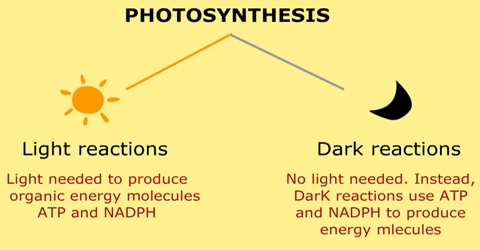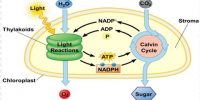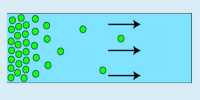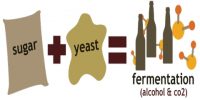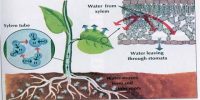Different phases of photosynthesis:
Photosynthesis is the procedure by which all autotrophic organisms like green plants, algae, and photosynthetic bacteria use light energy to make sugar and oxygen gas from carbon dioxide and water. The process of photosynthesis converts light energy to chemical energy, which can be used by organisms for different metabolic processes. In 1905 scientist Black man divided photosynthesis into two phases:
- Light phase or photo-chemical reaction
- Dark phase or photo-neutral reaction
Light phase:
Light reactions involve the conversion of sunlight to chemical energy taking on the form of adenosine triphosphate (ATP) and nicotinamide adenine dinucleotide phosphate (NADPH). In these reactions, the energy from sunlight is absorbed by chlorophyll and converted into chemical energy in the form of electron carrier molecules like ATP and NADPH. The light-dependent reactions take place in the thylakoid membranes in the granum (stack of thylakoids), within the chloroplast. The plant uses light energy to generate the co-enzyme Nicotinamide adenine dinucleotide phosphate, or NADPH and ATP, the molecules that carry energy. The chemical bonds in these compounds store energy and are used during the dark phase.
- This phase needs light
- It occurs in grana of the chloroplast
- Here light energy is converted to chemical energy and NADH2 and ATR are found.
- Reaction is: ADP + NADP + H2O → ATP +NADPH + H ion + O2.
This phenomenon is known as photo-phosphorylation.
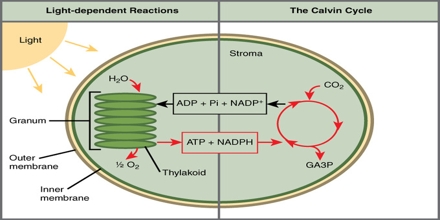
Photo-phosphorylation is of two types:
(a) Cyclic Photo-phosphorylation and
(b) Non-cyclic Photo-phosphorylation.
Dark phase:
When the dark reactions are ready to take place, carbon dioxide becomes sugar with ATP and NADPH, in a process called the Calvin cycle, or carbon fixation. In light-independent reactions (the Calvin cycle), carbohydrate molecules are assembled from carbon dioxide using the chemical energy harvested during the light-dependent reactions. The dark phase uses the ATP and NADPH generated in the light phase to make C-C covalent bonds of carbohydrates from carbon dioxide and water, with the chemical ribulose biphosphate or RuBP, a 5-C chemical capturing the carbon dioxide.
- This phase does not require light and it occurs after the light phase.
- It occurs in the stroma of chloroplast.
- Carbon dioxide is reduced to form carbohydrate by the action of ATP, NADPH2, etc. produced during the light reaction.
- ATP + NADPH + CO2 → ADP + NADP + glucose.
All reactions of different plants in the dark phase are not same.
Dark reaction takes place by two recognized paths:
- Calvin and Bassham path away: – This is seen in C3
- Hatch and stack path way: This path away is seen in C4
